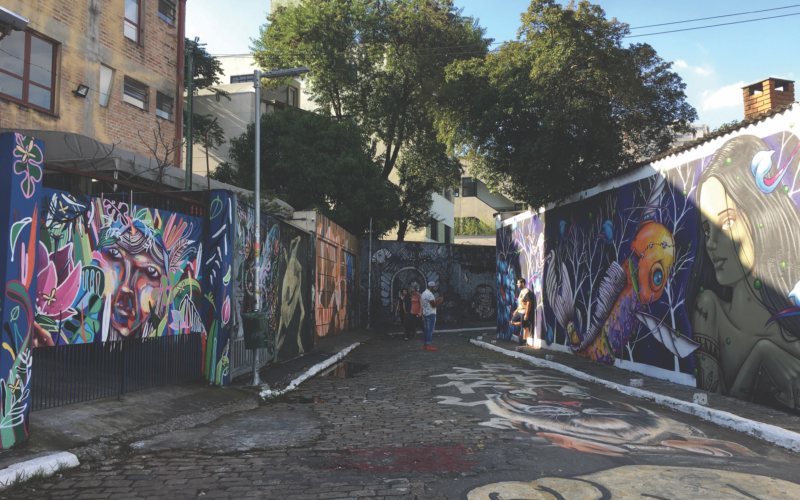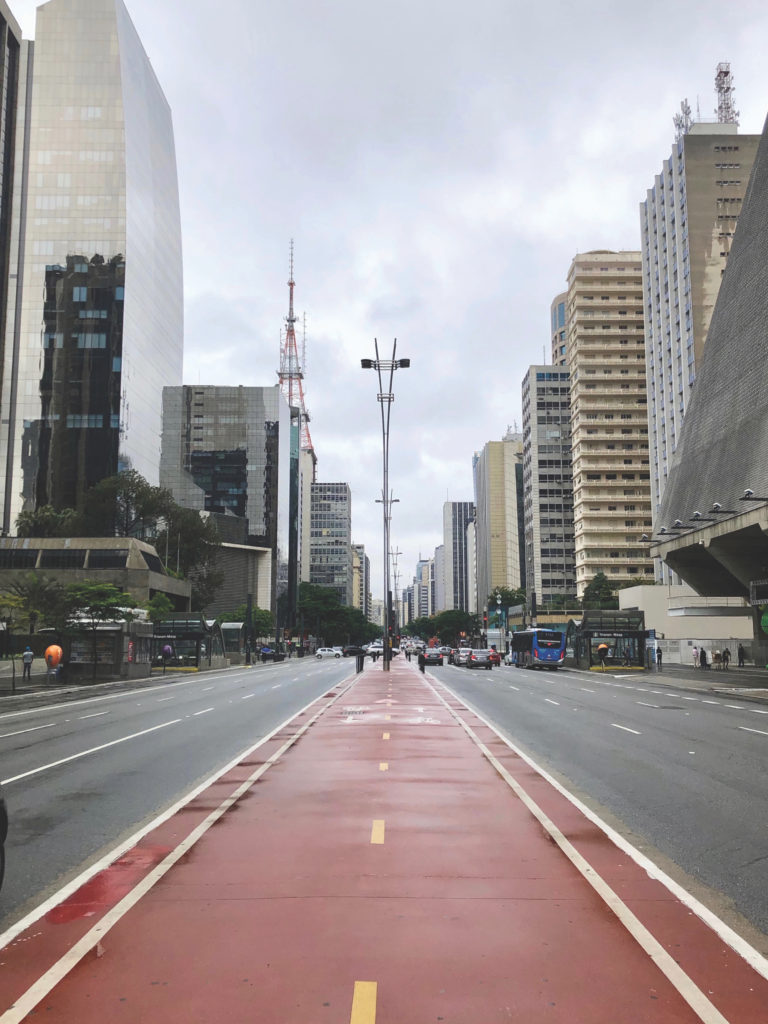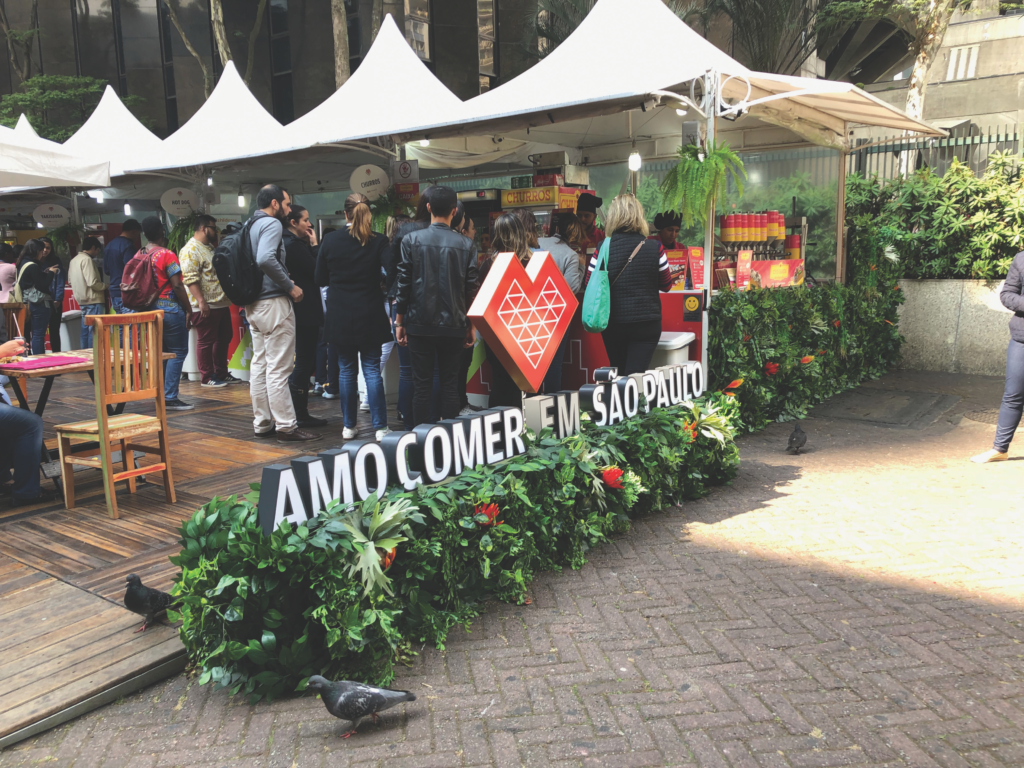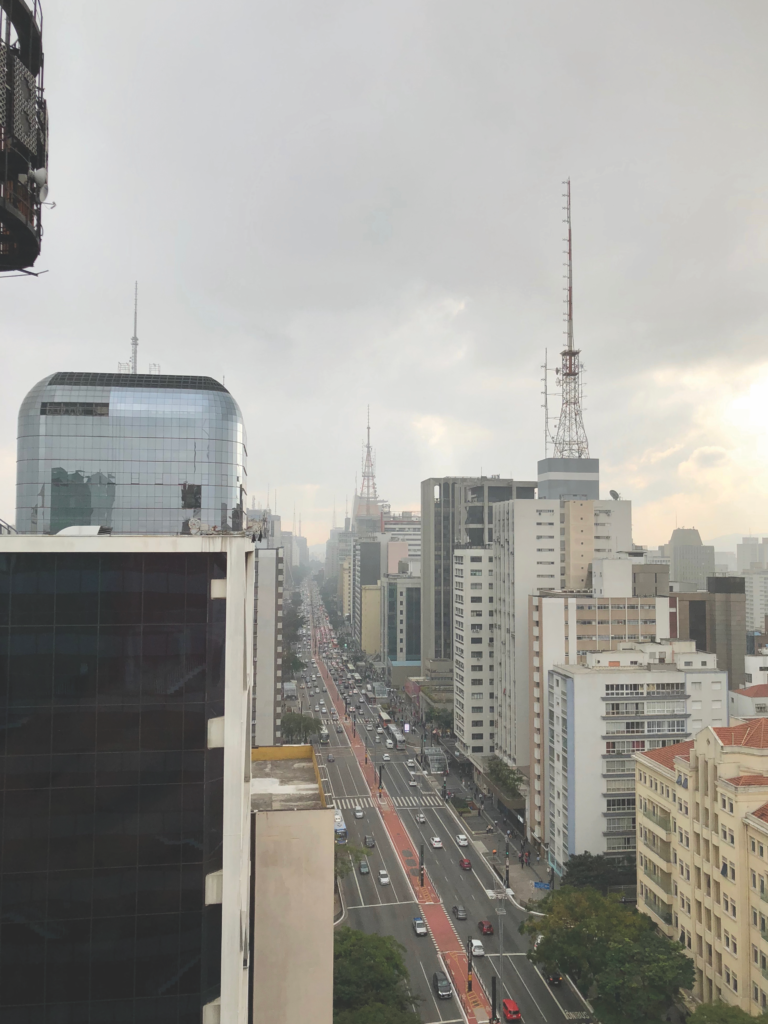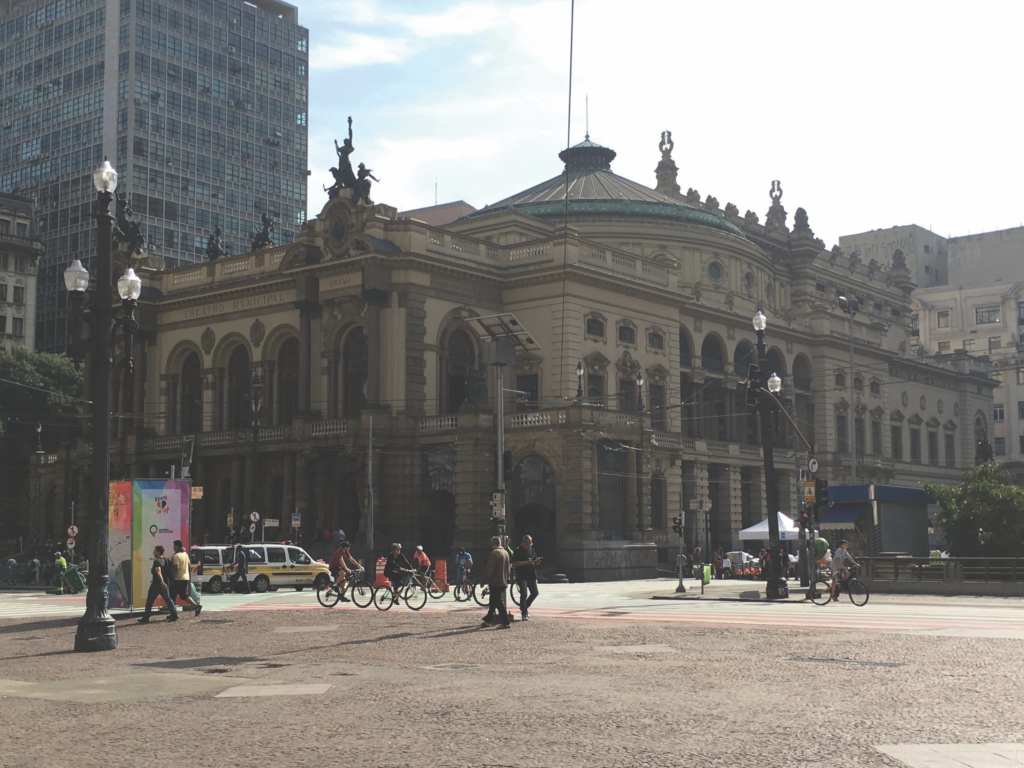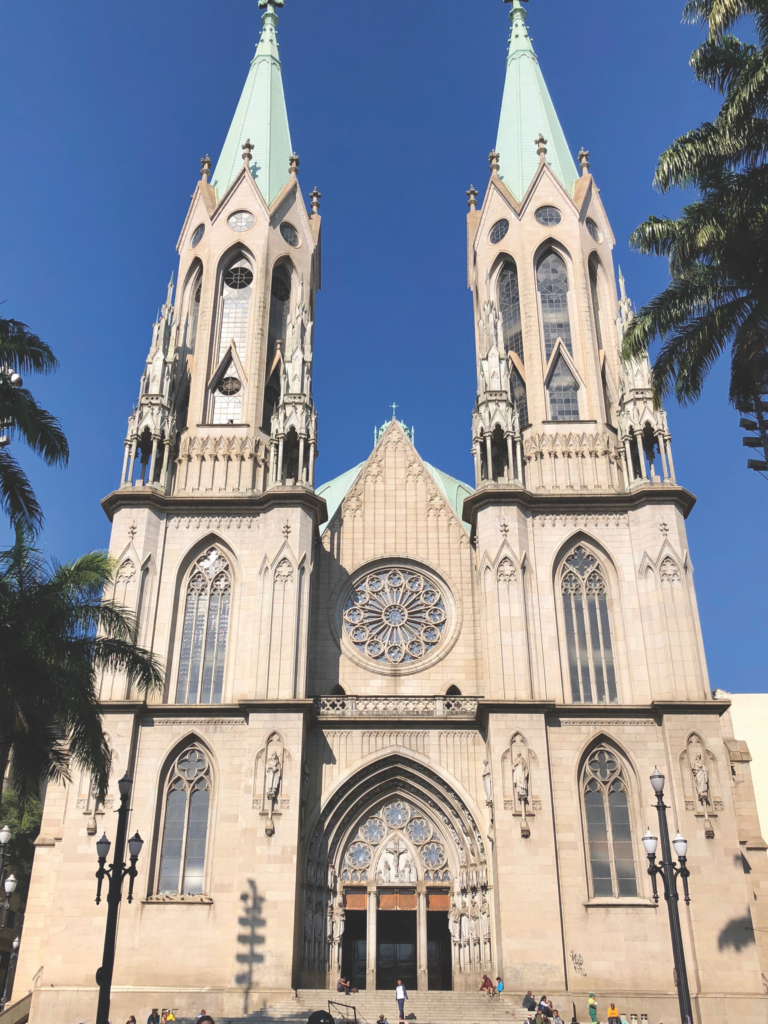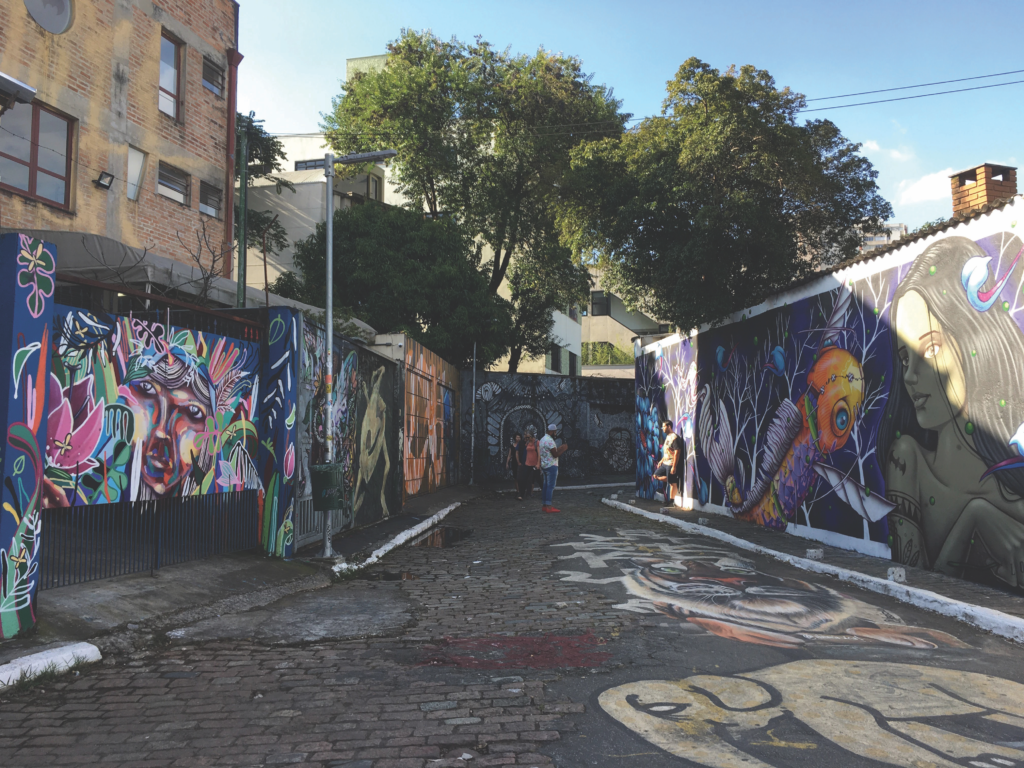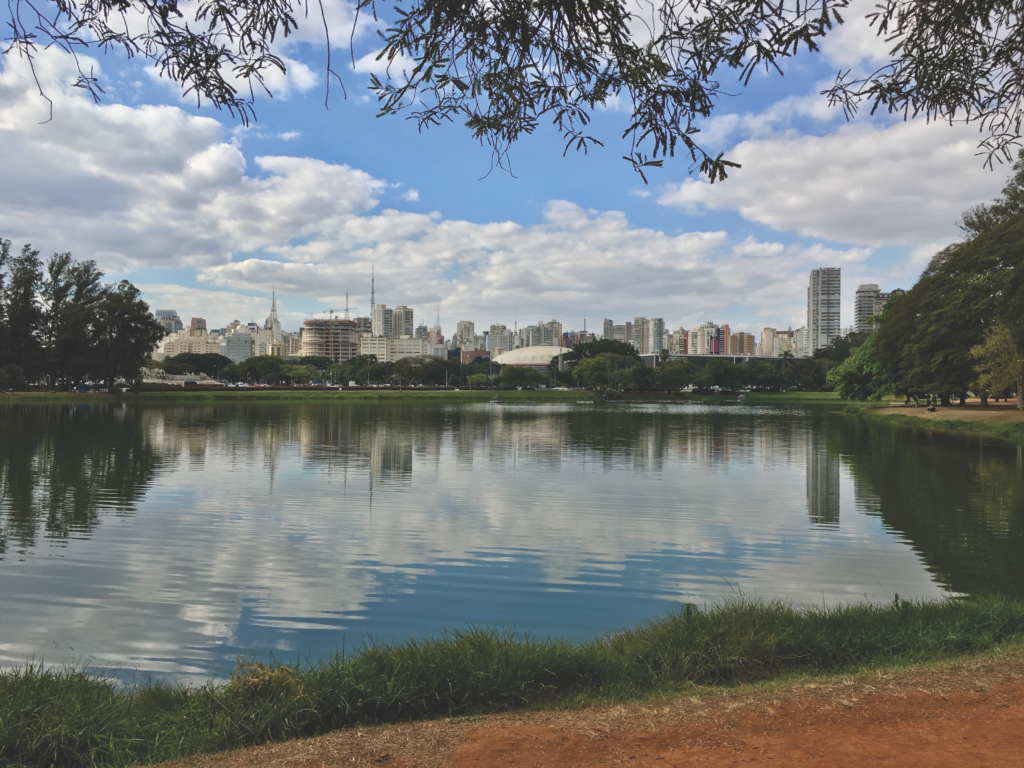By: Pedro Henrique Koeler Goulart
São Paulo is the largest city in Brazil and the Southern Hemisphere, with about 21.5 million inhabitants. This giant metropolis naturally has incredible cultural landmarks, countless gastronomic options and a vibrant nightlife which will make any tourist want to return as soon as they get home!
As a first-hand tip from a local, I suggest taking the subway/train system since it can take you to many of the famous landmarks of the city. Not speaking Portuguese is not a problem if you visit touristy areas, but note most Brazilians do not speak English (though you can always find someone who does!). Another important point is that the Brazilian Real (R$) is the currency so you will either need to exchange your money or take an international credit/debit card with you (most places in São Paulo take cards).
The grand epicenter of the city is Paulista Avenue. This 1.7-mile strip of asphalt and concrete is home to the most famous avenue in Brazil with skyscrapers, cultural spaces, commerce, and festivals. The São Paulo Museum of Art (MASP) is one of the most well-known museums in Brazil for its countless pieces and iconic design that symbolizes modern Brazilian architecture. Another great cultural space is Japan House, which showcases Japanese art and usually has thrilling exhibitions of modern Japanese artists.
While cultural spaces are definitely a big part of Paulista Avenue, the gastronomic options are also fabulous! While there are plenty of shopping malls and world-famous fast food chains in the region, you cannot get the best of the city if you do not try the local food trucks located in the gastronomic street fair located near Alameda Rio Claro. Another great option is the rooftop café at the Social Service of Commerce (SESC) building, which has great healthy, delicious and budget-friendly options for lunch or an afternoon coffee, and you will also find that the free observatory has the best view from Paulista Avenue.
The Paulista Avenue region is also home to the best bars/nightclubs in the city and the most stylish stores as well. You will find countless nightlife options at Rua Augusta: English pubs, sports bars, video game bars, jazz lounges, rock/alternative nightclubs, pop/Brazilian funk nightclubs and many others! On the opposite side of the Paulista Avenue region, you will find the fashion district: Rua Oscar Freire. There you can find world-famous and Brazilian luxurious brands and stylish restaurants. Perhaps a college student budget wouldn’t allow for a shopping trip there, but it is definitely worth checking out!
São Paulo is much more than the Paulista Avenue though, and the downtown area offers the most astonishing historical and cultural experience of the city. The São Paulo Municipal Theatre, one of the first opera houses in Brazil, offers free guided tours (English tours available) where you learn the inspirations behind the architecture, including the many representations of the coffee plant (since the coffee industry shaped the economy of the city). Another remarkable cultural space is Pátio do Colégio, a replica of São Paulo’s original Jesuit mission erected in 1554, which showcases the original art and history of the metropolis.
Another marvelous landmark of São Paulo and one that appears in many postcards is the Sé Metropolitan Cathedral, with gigantic Neo-gothic structure and incredible history. The square in front of the cathedral is home to the Marco Zero monument which symbolizes the actual center of the city, which is the place where roads, highways, rail lines and telephone lines are marked from.
The downtown area is also home to the São Paulo Municipal Market, the most famous public market of São Paulo and the best place to find exotic fruits and vegetables, and dairy/meat produce. The market also has countless food stands where you can get a taste of the city’s cuisine.
Going further from the downtown area one can find one of the most famous urban parks in São Paulo, the Ibirapuera Park, home to the most beautiful scenery in the city and countless cultural centers and festivals, including the São Paulo Fashion Week. The buildings in the park were designed by one of Brazil’s most famous architects: Oscar Niemeyer, the same person who designed Brazil’s capital, Brasilia. The park is extremely popular during the weekends and is a true green oasis amid the concrete jungle.
On a different area of the city, you can find Batman’s alley, a famous alley cultural space with numerous vibrant graffitis. It started in 1980 with a street art depicting Batman, which inspired local students to paint more graffiti in the space. It is now a space visited by many tourists and even counts with guided tours.
São Paulo is definitely one of my favorite cities in Brazil and I hope you found my tips helpful for your adventure there! Because there are so many more things to do in São Paulo, I would recommend taking a look on the map and visiting new places, or asking a local (even if it is through Google translate) – people in Brazil are generally very friendly!
Photos by Pedro Henrique Koeler Goulart

